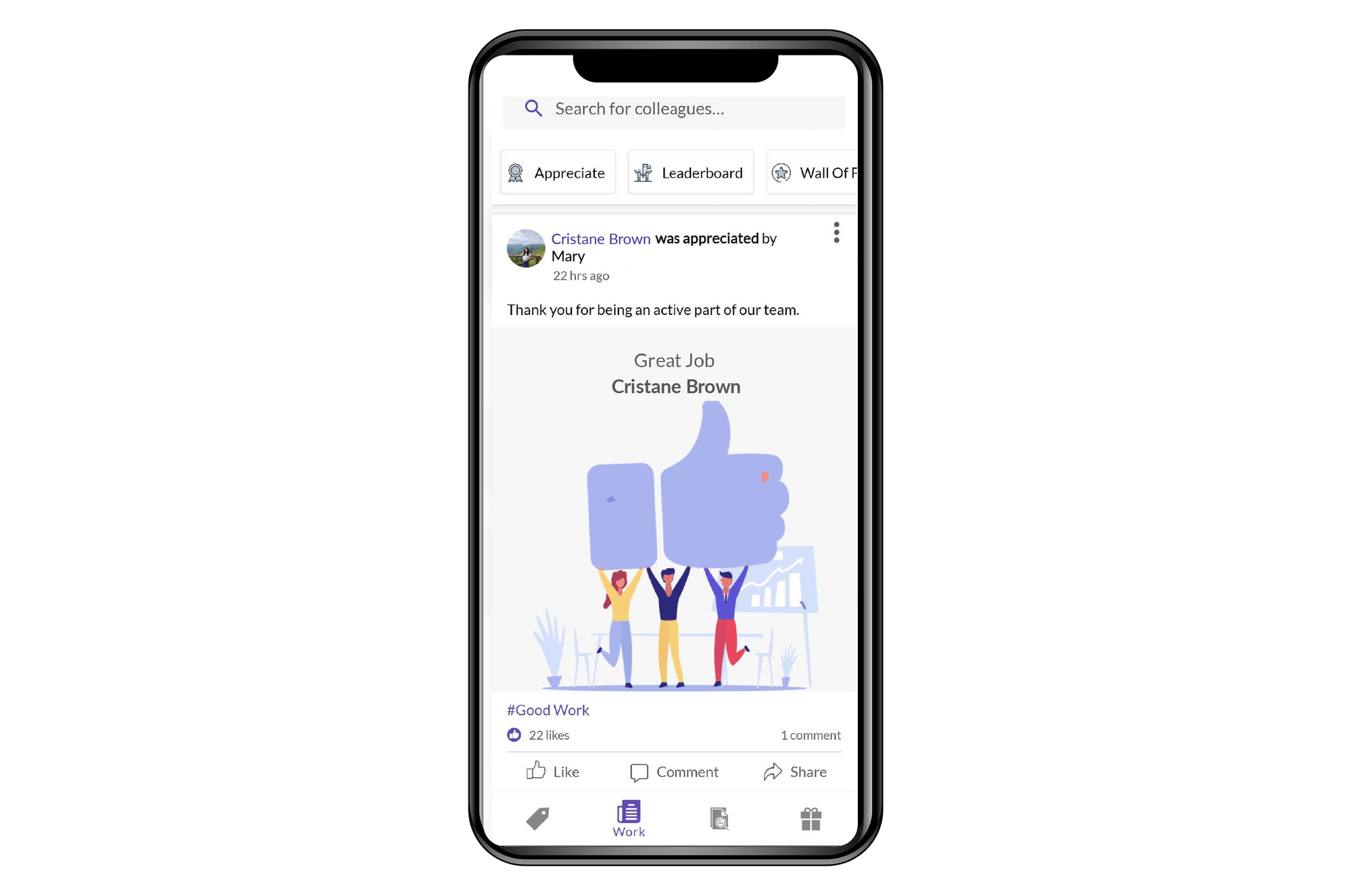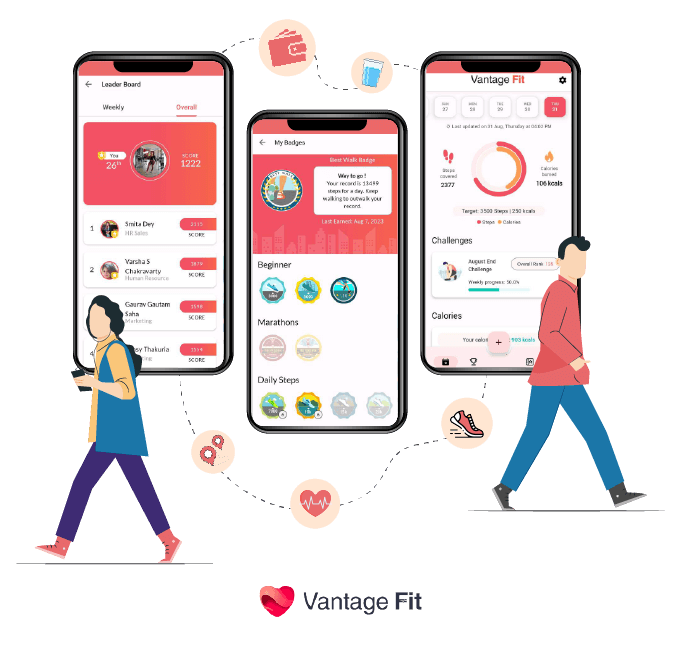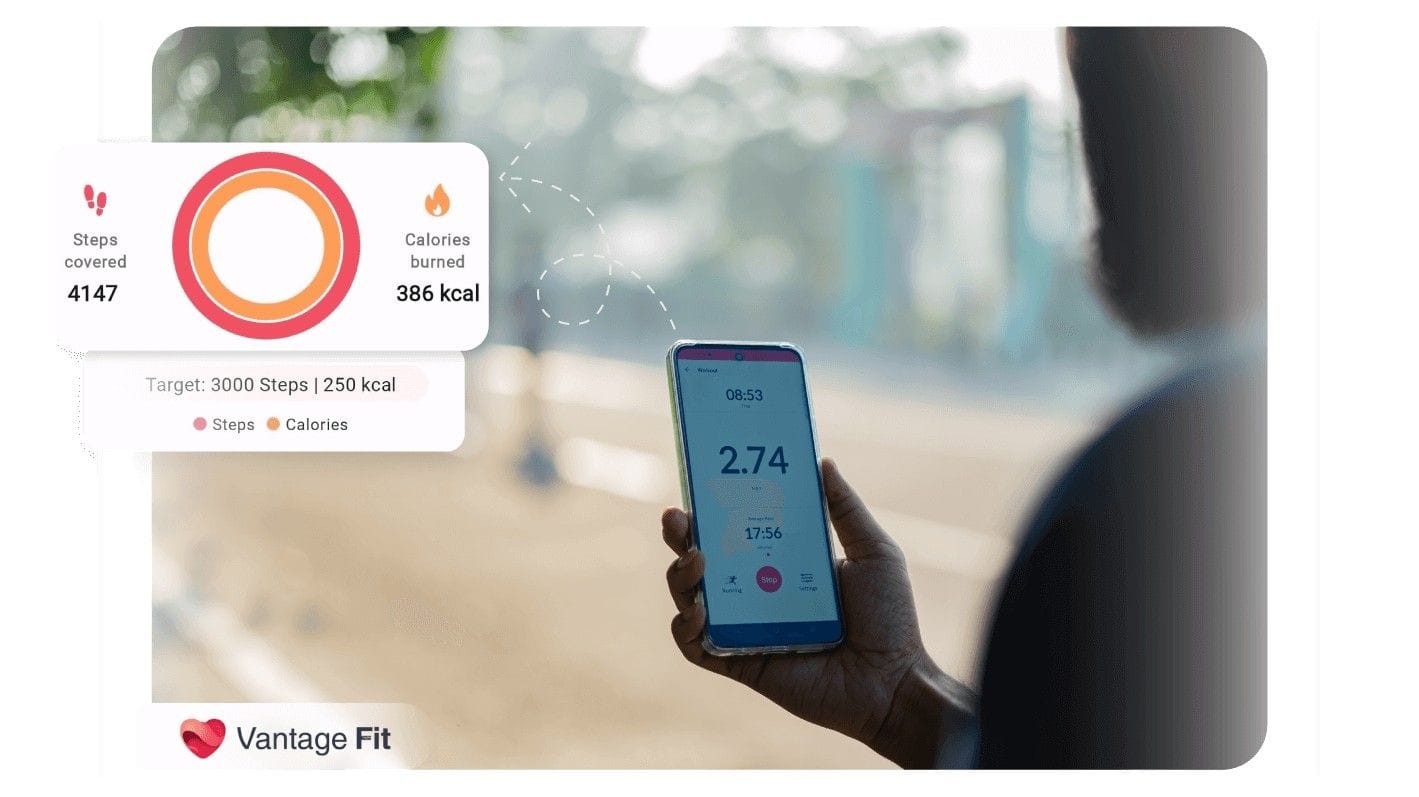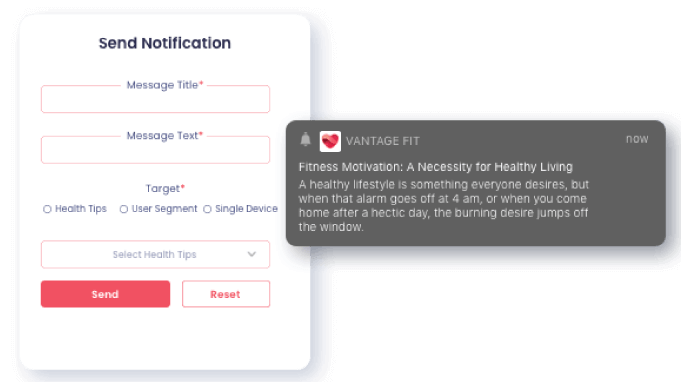Organize a Step Challenge at Work & Track It (Free Template)
Once seen as optional perks, wellness challenges have now become essential in today’s work culture. Step challenges, in particular, often called "Stepathon" have gained popularity as an effective way to boost physical activity and strengthen team dynamics. According to the Journal of Continental Hospitals, walking 10,000 steps every day can:
- Burn 400-500 calories
- Improve cardiovascular health
- Enhance mental well-being
- Reduce the risk of chronic diseases
My personal favorite is the "Stairway to Wellness." In this challenge, my team members and I collectively climbed the equivalent height of Mount Everest (8,848.86 meters) in just 5 days. This translates to approximately 46,572 steps—or 9,345 steps per day. It helped me build resilience, strengthen my legs, and improve heart health. Plus, it's perfect for teams or small groups bringing everyone together.
Tools like Fitbit, Google Fit, or wellness platforms are ideal for tracking the number of steps. They provide real-time stats, leaderboards, and progress analytics. Smartwatches and pedometers work effectively for basic tracking.
When planning a step challenge, consider timing and participation factors. For instance, March is popular for step challenges as it signals spring's arrival and aligns with National Nutrition Month. Warmer weather and longer days encourage outdoor activities and wellness initiatives.
Milestones, rewards, and recognition are key to keeping motivation high. Setting team goals like "Walk 30,000 steps together" fosters a shared sense of purpose. Adding incentives like gift cards or wellness products boosts participation. While the real reward lies in the physical and mental transformation that participants experience along the journey.
The standard target is 10,000 steps daily, which takes around 60-90 minutes. Over a month, this equates to approximately 300 miles. Encouraging daily walking integrates not only physical health but also contributes to social wellness. For example, taking a walk during lunch, using the stairs, or joining group walks.
What is a Step Challenge?

A step challenge is a competition that tracks a person's steps from walking or running. Unlike a walking challenge, the focus is on step count rather than distance or duration.
In a workplace setting, a step challenge becomes a wellness initiative where employees compete to complete as many steps as possible to achieve daily, weekly, or monthly targets. Participants push themselves by setting personal or predetermined step targets and compete against others individually or as a team, fostering a sense of motivation and teamwork within the organization.
They serve as a powerful tool for promoting employee health and building connections at work.
Step challenges trigger positive habits by incorporating benchmarks like reaching 10,000 steps a day or accumulating a specific distance over time. Features such as progress tracking, leaderboards, and team goals foster friendly competition among participants. This, in turn, strengthens team connections and workplace relationships.
The flexibility of running or brisk walking promotes inclusivity, making it adaptable to different fitness levels. These challenges also allow employees to break away from their desks, re-energize, and integrate wellness into their daily routines, contributing to a healthier, more engaged workforce.
Creative step challenges keep participants motivated and engaged. Ideas include a "30-Day Step Journey" turning steps into a virtual trek across famous landmarks. This adds a sense of adventure.
Charitable elements tying steps to donations, or fun activities like photo sharing and scavenger hunts encourages active involvement. Mixed fitness teams and seasonal themes ensure inclusivity and relevance. Celebrating milestones and gathering feedback helps refine and sustain long-term participation.
To ensure a fun and fair step challenge, set clear rules and guidelines-
- How to Track: You can track steps daily using step challenge apps or devices. Honesty is key.
- Duration: The length of the challenge typically spans 1-4 weeks.
- Who Can Join: Everyone! Challenges can work for remote, hybrid, or onsite teams.
- Prizes: Look for step challenge prize ideas. Consider offering fun wellness rewards like gift cards, fitness gear, wellness subscriptions, or paid time off for top performers. This can encourage employees to participate.
- Work Style Flexibility: Step challenges work for any job style. Remote teams can use virtual leaderboards. Hybrid setups can mix in-person walks with app tracking.
Onsite teams can host group walks during breaks. This makes it easy for everyone to participate in a step challenge.
Workplace Step Challenge Template
Check our free step challenge tracker, meticulously designed to guide you towards achieving your companies step goals. Click the links below to get the DIY Step Challenge by Vantage fit-
How to Set Up a Step Challenge?

Starting a step challenge requires careful planning and the right tools. Here's what you need to know about running a step challenge successfully:
1. Set Up Tracking Apps for the Event
Tracking devices are key to a successful step challenge. Encourage participants to use apps like Samsung Health, Apple Health, or Fitbit. These tools provide real-time stats, leaderboards, and progress analytics, making progress easy to monitor and stay motivated.
2. Set Up a Leaderboard for the Event
- Manual Reporting: Use Excel sheets to help participants log their daily steps.
- Third-Party Software: Leverage employee wellness platforms for automated tracking and leaderboard updates.
3. Personalize Goals and Activities for the Challenge
Create goals for teams or individuals. For team challenges, consider fun names like "The Trail Blazers" or "Step Up Squad." Adapt the challenge for remote, hybrid, or onsite teams to ensure inclusivity.
Different participants have unique fitness goals. For employees with physical disabilities, set goals like upper-body exercises or wheelchair pushes. Those who swim or cycle can convert their activity into steps. Use AI tools to design inclusive challenges that motivate everyone.
Introduce surveys for employees to share their fitness goals. This helps align programs with their preferences and ensures inclusivity for all participants.
4. Promote the Challenge in the Company
Spread the word using creative posters and flyers. Share details through:
- Emails
- Internal Newsletters
- Instant Messaging
- Video and Audio Communications
- Social Media Announcements (e.g., LinkedIn, Facebook, Instagram, TikTok)
5. Increase Participation in the Challenge
Build excitement by:
- Sharing success stories from previous challenges.
- Encouraging managers to participate and inspire their teams.
- Highlighting collective milestones like "20,000 steps by the entire team in a day.
6. Motivate the Participants

Tailor motivations for different performers:
- Top Runners: Offer grand rewards and public recognition.
- New Participants: Provide encouragement and small prizes for consistency.
- Midway Droppers: Send reminders and motivational quotes to reignite interest.
Celebrate achievements by sharing progress and success stories on company social media platforms. Acknowledge participants publicly to build morale and foster healthy competition.
7. Get More Steps at Work

- Walking Meetings: Instead of sitting, have meetings on the go. Walk and talk.
- Walking Breaks: Take short walks throughout the day. It's refreshing and adds steps.
- Park Farther Away: Choose parking spots further from the entrance.
- Walk During Lunch: Use your lunch break for a brisk walk.
- Use the Stairs: Skip the elevator. Take the stairs for extra steps. You can also try stair climbing challenge at work.
Why Should a Company Host a Step Challenge?

As part of comprehensive employee wellness programs, step challenges bring fun and excitement to the workplace.
1. Improve Physical and Mental Health
Engaging in daily walking benefits both the body and mind. Regular physical activity reduces stress, enhances mood, and improves overall health. A comprehensive meta-analysis led by Dr. Brendon Stubbs from King's College London in 2018 found that more active individuals have a significantly lower risk of developing depression.
The study analyzed data from 250,000 participants and concluded that higher levels of physical activity were protective against future depression across all age groups and geographical regions. Thus, healthier employees tend to be happier, more engaged, and more productive in their work.
2. Support Weight Management
Walking helps with weight management by keeping the body moving. Step challenges encourage daily steps, making it easier to stay fit. A little extra motivation from a company challenge can keep employees on track to reach their health goals.
3. Promote a Culture of Goal Setting and Achievement
Step challenges help employees set small goals and achieve them every day. It's like turning big dreams into simple, reachable steps. Employees feel proud and motivated to do more when they meet their goals.
4. Boost Morale & Engagement
Step challenges bring fun and excitement to the workplace. The competition and shared goals energize everyone. Employees who are happy and engaged work better together and get more done.
5. Foster Teamwork
Step challenges bring coworkers together to reach a common goal. It builds teamwork and trust. When employees walk together, they feel more connected, and it's a fun way to strengthen relationships.
6. Nurture Healthy Habits Among Employees
A step challenge helps employees incorporate healthy habits into their daily routine. It encourages regular movement, gets people away from their desks, and helps them stay active. These habits last, leading to healthier employees overall.
For instance, DLA+ completed over 1 million steps in their Winter Step Challenge using Vantage Fit, demonstrating how engaging and impactful these challenges can be in motivating employees towards healthier lifestyles. Read the full case study here.
Create a Step Challenge with Vantage Fit

Interested in launching an engaging step challenge? Let Vantage Fit handle the heavy lifting. With our advanced technology, you can focus on the fun and motivation while we handle the logistics. Here's how Vantage Fit makes it easy:
1. Step Counting Synced to Devices

Vantage Fit syncs effortlessly with popular devices like Fitbit and Apple Watch. It tracks your steps automatically without the need for manual input.
2. Automated Reminders & Engagement Boosters

Keep participants engaged with automated reminders and progress updates. Plus, you get fun rewards like badges and milestones to stay motivated. No more manual follow-ups – Vantage Fit keeps you excited and on track without extra effort.
3. Real-Time Leaderboard Tracking

Track real-time progress with automated leaderboards, fostering friendly competition among teams and departments.
4. Customizable Dashboard Viewing

With Vantage Fit's intuitive dashboard, you can get instant insights into your challenge. Track key metrics and monitor progress to ensure success.
5. Verification & Anti-Cheating Measures

Maintain the integrity of your challenge with Vantage Fit's built-in anti-cheating algorithms. They ensure fair play and accurate tracking.
Frequently Asked Questions (FAQs)
1. Does it help me lose weight?
Yes, walking can help you lose weight. If you walk 10,000 steps in a day, that's more than 2 miles. You can burn around 400-500 calories. If you keep this up, you can lose about 1 pound weekly.
2. What tools can we use to track a step challenge?
You can use devices like Apple Watch, Fitbit, or Samsung Health to track your steps. You can also use a simple pedometer. These tools help you keep track and stay on top of your goals.
3. Should I use any free step counter platform?
Yes, using a free step counter app is a great idea. Apps like Google Fit or Health Mate can track your steps for free. They're simple and easy to use for a step challenge.
4. Is a walking competition the same as a step challenge?
No, they are different. A walking competition is about how fast you can walk. A step challenge counts all your steps, whether fast or slow. It's about walking more each day.
5. How to Win a Step Challenge?
To win a step challenge stay consistent and exceed daily step goals by walking during breaks, taking stairs, and adding extra steps to your routine.
6. What other fitness challenges can we do at work?
There are many fitness or wellness challenges to try at work. Some of the most popular include:
- Water Challenge: Track how much water you drink.
- Healthy Eating Challenge: Count healthy meals or snacks.
- Stretching Challenge: Set goals for daily stretches or yoga.
These challenges are significant for overall health and can be done side by side with a step challenge.
7. How do we track steps better?
To track steps better, focus on these key things:
- Your daily step count
- Time spent walking
- Your average walking pace
Using a wellness app with step tracking is helpful. These apps keep track of all your steps and give you progress updates.
8. What are the different ways to increase daily step count?
To get more steps, try things like:
- Taking the stairs instead of the elevator. If each floor has 20 steps, you'll add 20 steps every time you skip the elevator.
- Walk while talking on the phone.
- Park farther away or walk to lunch.
These small changes add up and help you hit your step goals.
9. Do virtual step challenges work the same as offline step challenges?
Yes, virtual step challenges work the same as offline ones. The difference is that you can track your steps from anywhere. It's a great way for remote teams to join in and stay connected.
Want to improve your company's employee wellness programs? Start a step challenge with Vantage Fit and experience the difference. Schedule a Free Demo now!





